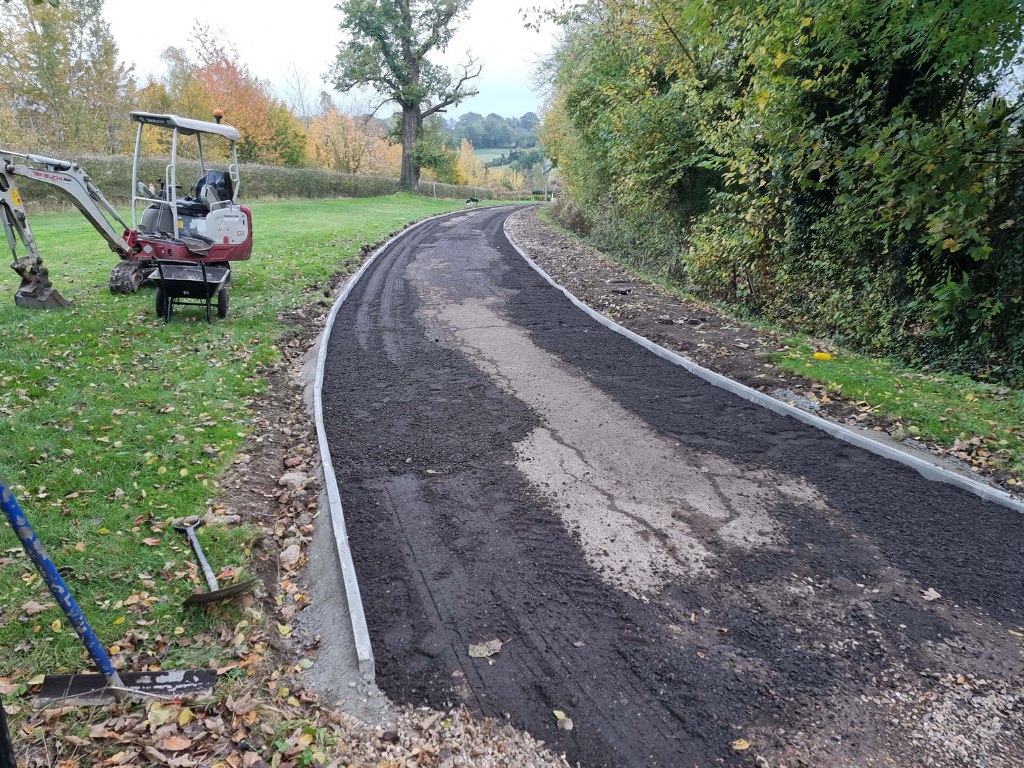10 Essential Tips for Maintaining a Tarmac Farm Road
A well-laid tarmac farm road is a valuable asset, providing reliable access for vehicles, machinery, and livestock year-round. However, without regular upkeep, even the best surfaces can deteriorate under constant pressure from heavy loads and changing weather conditions. If you own or manage agricultural land in the Ascot area, knowing how to maintain your tarmac road properly can help preserve its longevity, functionality, and safety.
At NS Driveways Ascot, we work with farms and rural properties across Berkshire to install and maintain durable tarmac surfaces. Here are ten practical tips to keep your tarmac farm road in top condition.
1. Inspect Regularly, Especially After Bad Weather
Farm roads are particularly vulnerable during and after heavy rain, frost, or prolonged heat. Carry out visual inspections after each season or severe weather event to catch early signs of cracking, erosion, or pooling water.
2. Repair Minor Cracks Before They Spread
Small cracks in tarmac might seem harmless but can quickly worsen if left unattended. Use cold-pour bitumen sealant or contact a professional to patch and seal early damage before it turns into potholes or structural issues.
3. Keep Drainage Clear
Blocked ditches or culverts can lead to standing water, which weakens the tarmac and causes premature wear. Ensure all water channels alongside your road are free from debris, silt, and vegetation that could block flow.
4. Avoid Overloading the Surface
Tarmac is tough, but regular traffic from overloaded tractors or lorries can lead to indentations and surface fatigue. Spread loads where possible, and consider reinforcing vulnerable sections or lay-bys with a stronger surface specification.
5. Trim Back Vegetation
Overhanging branches and invasive roots from hedgerows or trees can cause direct and indirect damage to the road. Keep vegetation cut back to prevent shading (which slows drying) and reduce the risk of roots lifting the surface.
6. Sweep the Surface Occasionally
Loose gravel, mud, or leaves can trap moisture and reduce traction. Periodically sweeping your tarmac road helps prevent organic matter from degrading the surface and encourages better water runoff.
7. Monitor Edge Wear
Edges of rural roads are often the first to crumble due to lack of support and pressure from turning or heavy vehicles. Reinforce edges with additional stone or concrete kerbing to help maintain the road’s shape and strength.
8. Schedule Re-Sealing When Needed
Surface dressing with a fresh layer of bitumen and fine aggregate can restore skid resistance and protect the base layer from UV and water damage. Consider this preventative measure every 5–7 years, depending on usage.
9. Don’t Let Water Pool
Standing water is one of the biggest threats to a tarmac surface. If you notice water collecting in certain areas, consider adding a French drain or re-grading that section to restore the flow.
10. Work With a Local Professional
Maintenance is always more effective with a clear strategy and expert guidance. Partnering with an experienced tarmac contractor ensures small issues are resolved quickly and future works are planned with your land’s needs in mind.
Conclusion
Maintaining a tarmac farm road isn’t just about appearance—it’s about ensuring year-round access, protecting your investment, and keeping your daily operations running smoothly. With regular attention and the right approach, your tarmac road can last for decades.
For professional advice or maintenance support in Ascot and the wider Berkshire area, contact NS Driveways Ascot. We offer reliable, tailored tarmac solutions to keep your farm road in excellent condition.
Call us on: 01344 951 398
Click here to find out more about NS Driveways Ascot
Click here to complete our contact form and see how we can help with your driveway needs.

